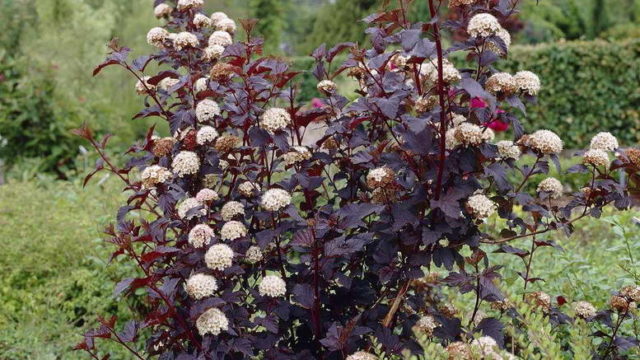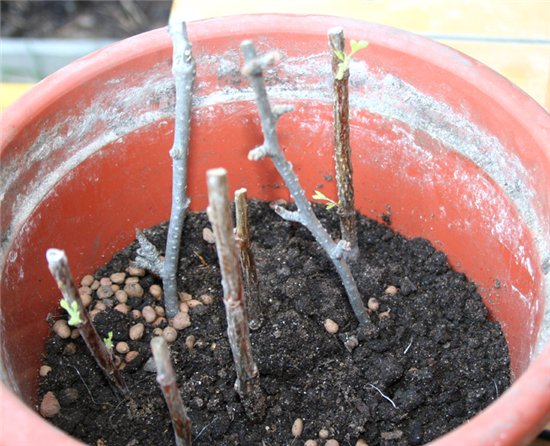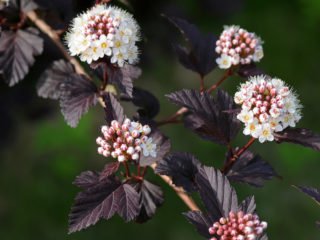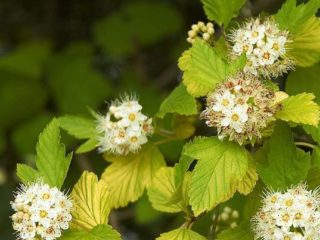Content
Bladderwort is a crop that can delight and decorate a plot of land not only with beautiful buds, but also with quite attractive foliage. This species is often called Meadowsweet or Spiraea viburnum. As practice shows, the plant is excellent for creating a hedge, as it tolerates the process of cutting and shaping well. If necessary, planting material can be purchased at a specialized store or propagated by cuttings in the summer yourself.
Peculiarities of propagation of viburnum leaf by cuttings
For propagation, it is worth using mature bushes without obvious signs of disease. It is also not recommended to use weak plants. For work, you should choose a sharp knife with which you can cut the required number of cuttings.
When is the best time to take cuttings?
As practice and reviews from experienced gardeners show, it is possible to carry out cuttings of bladderwort in summer, spring and autumn. It is best to propagate the crop in the summer. This is primarily due to the fact that in this case all the characteristics of the mother bush will be transferred to the plant. This propagation option is excellent when it is planned to plant a large amount of bladderwort on the site, but there is not enough planting material.
Propagation of bladderwort by cuttings in summer
Since cuttings are the most popular method of propagation, it is also perfect for bladderwrack. In this case, it is best to carry out work in the first half of summer, before the flowering period begins. The shoots must be of the current year and green. The length of the cuttings should be at least 20 cm, and each should have about 4 nodes (growth points).
Propagation of bladderwort by cuttings in spring
If necessary, you can carry out cuttings of the bladderwort in the spring. For these purposes, it is necessary to initially select the healthiest and strongest shoot, remove the leaves, leaving only the leaf blades on the crown. The work must be done carefully so as not to harm the mother bush. Young green shoots should be about 10-15 cm long.The bottom cut should be made at a 45 degree angle slightly below the bud.
Propagation of bladderwort by cuttings in autumn
It is recommended to carry out cuttings of bladderwort in the fall early in the morning or in cloudy weather, which will significantly reduce the amount of evaporation. For propagation, the length of the cutting should be approximately 10 cm. The upper cut is always straight, while the lower one should be made at a slight angle. The leaves are usually cut off by about half.
How to propagate bladderwort by cuttings
Propagating bladderwort from cuttings is not as difficult as it might initially seem. As practice shows, anyone can carry out such work even without special skills. The work can be done in summer, spring or autumn - each gardener chooses a time convenient for himself.
Rules for taking cuttings
To propagate the crop, it is important to select and trim the cuttings correctly. In this case, it is recommended to give preference to young and strong shoots. In most cases, almost all leaves are removed, as they take away a large amount of nutrients necessary for the formation of the root system. The lower cut must be oblique, and it is recommended to plant the cuttings at a slight angle.
Preparation of cuttings
It is important to understand not only how to propagate the vesicle by cuttings, but also how to properly process the planting material, plant it in a permanent place of growth, and care for it. In order for the root system to appear as quickly as possible, it is recommended to place the cuttings immediately after they have been cut in a container with a growth stimulator.As a rule, such preparations are dissolved in water, after which the cuttings are soaked for a period of 12 to 24 hours. In some cases, you can purchase the rooting agent in powder form, which you simply sprinkle on the bottom.
Landing
A day after soaking in the growth stimulator, the material is planted in special school beds, where a mixture of sand and peat is used as soil. The containers are covered with plastic film or a lid made of plastic. During the rooting process, it is important to periodically ventilate the cuttings and irrigate the soil. In the spring, as a rule, they are planted in a permanent place of growth.
Caring for cuttings
After the cuttings have been cut and planted in nutrient soil, we can assume that the propagation process is approximately half completed. Until the planting material is planted in a permanent place of growth, it also needs to be given due attention. In this case, do not forget about irrigating the soil - it must be moist, the cuttings must receive a sufficient amount of moisture. Since in most cases the containers are covered with plastic film, it is worth periodically removing it and ventilating the vesicle.
Transplantation to a permanent place
For planting, it is recommended to choose an open area that receives plenty of sunlight. In order for a fairly lush crown to appear during the formation process, and for there to be many buds on the shoots, it is worth choosing an area with fertile soil, and lime should be completely absent.
The hole must be prepared in such a size that the root system of the cutting with a lump of earth can completely fit into it. Fertile soil, as a rule, is poured into the hole 14 days before the planned time of planting. It is important to ensure that the root collar is located flush with the soil surface.
After planting, the planting material is watered abundantly. If the earth settles, add the required amount of earth. In order to retain moisture for a long time, it is recommended to mulch the soil.
Conclusion
Propagating bladderwort by cuttings in the summer does not take much time and effort. As practice shows, you can carry out the work yourself, without resorting to outside help. In this case, it is recommended to follow a step-by-step work algorithm, right up to planting in a permanent place of growth. If you provide the culture with proper care, the vesicle will delight you with its attractive appearance for many years.










